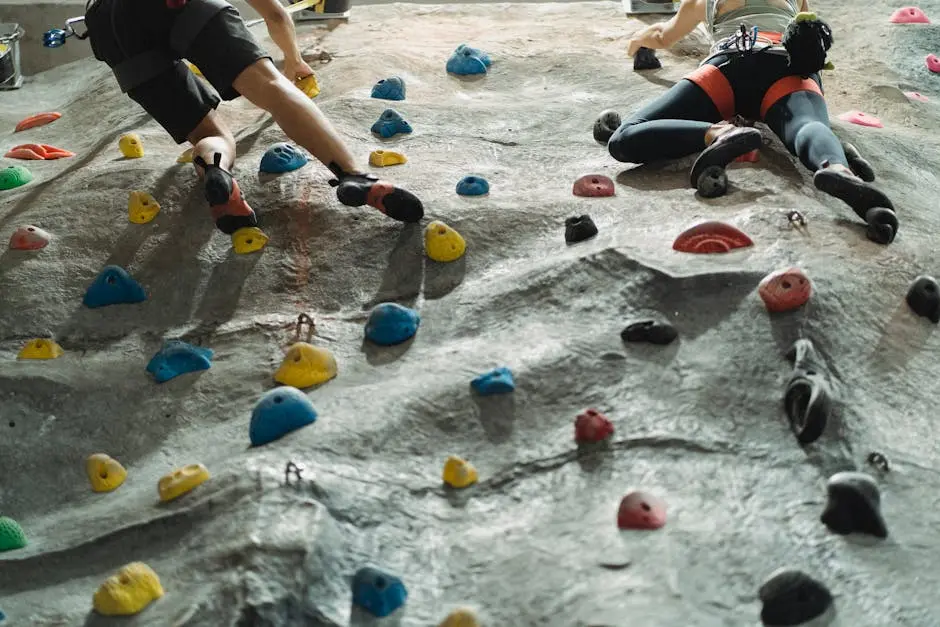Is Climbing Fitness Suitable for Beginners?
Climbing fitness is becoming increasingly popular, but many beginners wonder if it's the right choice for them. This guide will help you understand the suitability of climbing fitness for newcomers and what you need to consider before starting your journey.
Understanding Climbing Fitness
Climbing fitness involves using climbing as a workout to enhance strength, flexibility, and endurance. It’s a fun way to get fit and can be done indoors or outdoors.
What makes climbing fitness truly engaging is its dynamic nature. Unlike traditional workouts that can feel repetitive, climbing presents new challenges every time you step on a wall or boulder. This variability not only keeps you physically engaged but also mentally stimulated.
Moreover, climbing is not just about the physical aspects. It encourages problem-solving as you figure out how to ascend different routes, making it an excellent full-body workout. This blend of fitness, strategy, and thrill makes climbing a unique exercise option for newcomers.
Benefits for Beginners
Climbing offers numerous benefits for those just starting out, such as increased strength, improved concentration, and a sense of accomplishment.
For many beginners, climbing serves as an exciting gateway to fitness. Each time you conquer a route, your confidence grows, fostering a positive relationship with physical activities.
In addition to building muscle and endurance, climbing provides mental benefits. The focus required to navigate routes can help sharpen your concentration skills, and the community aspect of climbing creates a supportive environment that many new climbers find welcoming.
Furthermore, the adaptability of climbing means you can tailor your experience to fit your fitness level. It doesn't matter if you're scaling beginner-friendly walls or challenging yourself with advanced routes; there's always something new to strive for.
Essential Gear for New Climbers
Beginners won't need a lot of gear, but having the right equipment—like climbing shoes and harnesses—can enhance safety and comfort.
Starting with the basics, a good pair of climbing shoes can make a significant difference in your climbing experience. These specially designed shoes will enhance your grip on the wall, allowing you to focus on technique rather than slipping.
A comfortable harness is equally essential, providing safety and security as you explore various climbing terrains. Fortunately, many climbing gyms provide rental options for these items, so you don’t have to invest heavily upfront.
As you progress, you may consider additional gear such as chalk bags, which help keep your hands dry to improve grip, and crash pads for outdoor climbing. But initially, focus on the essentials to ensure a safe and enjoyable climbing experience.
Starting with the Right Techniques
>Learning proper techniques and safety protocols is crucial. Joining a beginner's class can provide essential guidance.
A beginner's climbing class introduces you to the foundational skills needed for climbing, such as how to properly tie knots, use safety gear, and communicate effectively with climbing partners.
Listening to instructors and practicing under their watchful eye allows new climbers to develop confidence and competence without the fears and uncertainties that can come from trial and error.
Moreover, mastering the basics early on prevents potential injuries. By learning about body positioning and how to distribute weight effectively, beginners can navigate climbs safely and efficiently.
Finding the Right Climbing Community
Connecting with local climbing groups or gyms can provide support, motivation, and companionship on your climbing journey.
The sense of community within the climbing world is invaluable for beginners. Many climbers are eager to share their knowledge and help newcomers feel welcomed, which can significantly enhance your learning experience.
Additionally, being part of a climbing group fosters motivation. When you see fellow climbers motivating one another, it often encourages you to push your own limits and step out of your comfort zone.
Finally, regular engagements with climbing peers can lead to friendships, support systems, and even partnerships for climbing outings. These connections often translate into more enjoyable and fulfilling climbing experiences.
Listening to Your Body
As with any fitness activity, it's important to pay attention to what your body is telling you to avoid injuries and ensure a sustainable practice.
While the excitement of climbing can propel you to push beyond your limits, it's essential to recognize the signs of overexertion. Muscle fatigue and discomfort are common, but sharp pain is a signal to stop.
Taking rest days seriously allows your body to recover and prevent burnout or injury—two factors that can impact your ability to enjoy climbing in the long run.
Additionally, don’t hesitate to communicate openly with fellow climbers or instructors about any concerns or discomfort you experience. This openness not only fosters safety but also creates an environment of support and understanding.
Final Thoughts
In summary, climbing fitness can be very suitable for beginners, provided you approach it with the right mindset and preparation. It's a fantastic way to improve physical health, build community, and challenge yourself mentally and physically.

